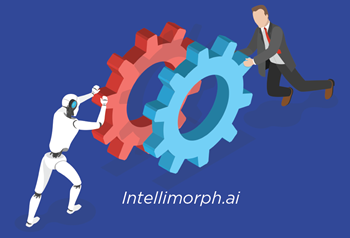With the rise of machine learning and intelligent automation, operational agility and process optimization are viable options for both small- and large-scale businesses. To serve the growing need for digitized, flexible corporate infrastructure, software-as-a-service (SaaS) providers have risen up in recent years with end-to-end solutions.
In the new business landscape currently taking shape, organizations cannot afford to miss out on the benefits offered by intelligent automation. The companies that have shown resilience – or even thrived – throughout the pandemic and various national lockdowns are those that either already had flexible infrastructures to manage extreme change or introduced them at speed.
Operations teams must be able to rapidly shift priorities to manage extreme change. As new events unfold, new processes and services are arising and requiring immediate attention, such as human resourcing challenges, remote online connectivity and delivering services into third party systems.
Traditional or legacy system infrastructures have proven vulnerable to these kinds of rapid changes. The weakness of these systems lies in their inflexibility, which is why organizations operating on traditional models have struggled so much during what has been an undoubtedly challenging year.
Automation in a time of crisis
Automation can help by streamlining these processes and improving output efficiency and accuracy. Doing this in times of crisis might feel like a tall order, even for the most innovative and well-resourced companies. But it doesn’t need to be. Business leaders can use the insights of organizations who have successfully navigated the automation transition and utilize the expertise of SaaS providers who specialize in bespoke solutions.
In order to achieve automation at scale, you need a digital workforce that can be deployed to work in any function of your business in an instant. The flexibility of infrastructure is a key building block to accomplishing this, but another vital element is having intelligent digital workers that scale to business demands as they arise.
This can ease the burden on overstretched human employees working in unfamiliar scenarios. That’s why many organizations are turning to digital labor that can scale to help their teams.
What should you look for in a digital workforce?
It's important to identify the capabilities you want from your digital workforce - those that will bring the most value to your team. Collaborate with a vendor or a partner to find automation technology that doesn’t add more pressure to your resourcing and digital workers that aren’t tied to single processes at a time and can shift between multiple tasks throughout the day. This will help to instill infrastructural flexibility, which in turn will make your organization more agile.
Automation isn’t solely about executing a process from end to end. In fact, many processes across all types of industries and departments require close collaboration between human and digital workers. If you think about the tasks you perform every day, there are many that could be assisted at different points by automation. It could be at the start of a process where a digital worker needs to collect a certain piece of information, or perhaps it’s in the middle of a process where the digital worker may need confirmation.
No matter how you structure the interaction between human workers and a new digital workforce, you need to strike a balance between agility, security and governance. Whether you’re looking to deploy automation in the cloud or on premise, every new deployment creates a new security risk you need to address and requires governance to be implemented. These new criteria shouldn’t detract from your ability to innovate with automation deployment at speed. Accomplishing speed at standard requires an automation solution that gives you total confidence and control, particularly a platform that’s ready to handle whatever your industry demands and won’t leave you open to the risk of penalties in a highly regulated industry.
The operational model of the future
The COVID-19 pandemic has exposed organizations to levels of strain rarely experienced before and demanded a rapid shift in operational models and service delivery methods. It’s likely that the shift to remote working will never be entirely reversed. We’re not going back to full-time office-based teams any time soon, and consumers will expect the ability to access products and services from wherever they are.
For these reasons, organizations must react to ensure flexible and intelligent process optimization, in which automation and digital workers are key. The two can combine to deliver improved customer experiences and make your employees’ jobs easier, boosting overall organizational productivity and conversions.
Speed has always been an important aspect of business, but it’s becoming more important than ever as organizations look to secure the operational agility to respond to extreme change. The rise of smart technologies and SaaS means this can be achieved at scale like never before. Alternatively, passing up on these benefits is preparing to fail.
Rapid deployment of intelligent capabilities can help your organization avoid these pitfalls, and even help to establish a competitive edge as the world moves beyond the coronavirus crisis into the new normal. What that will look like isn’t set in stone, but operational agility and resilience are sure to be essential, especially if you’re looking to scale and grow.
Further reading:
Access the latest business knowledge in IT
Get Access






Comments
Join the conversation...